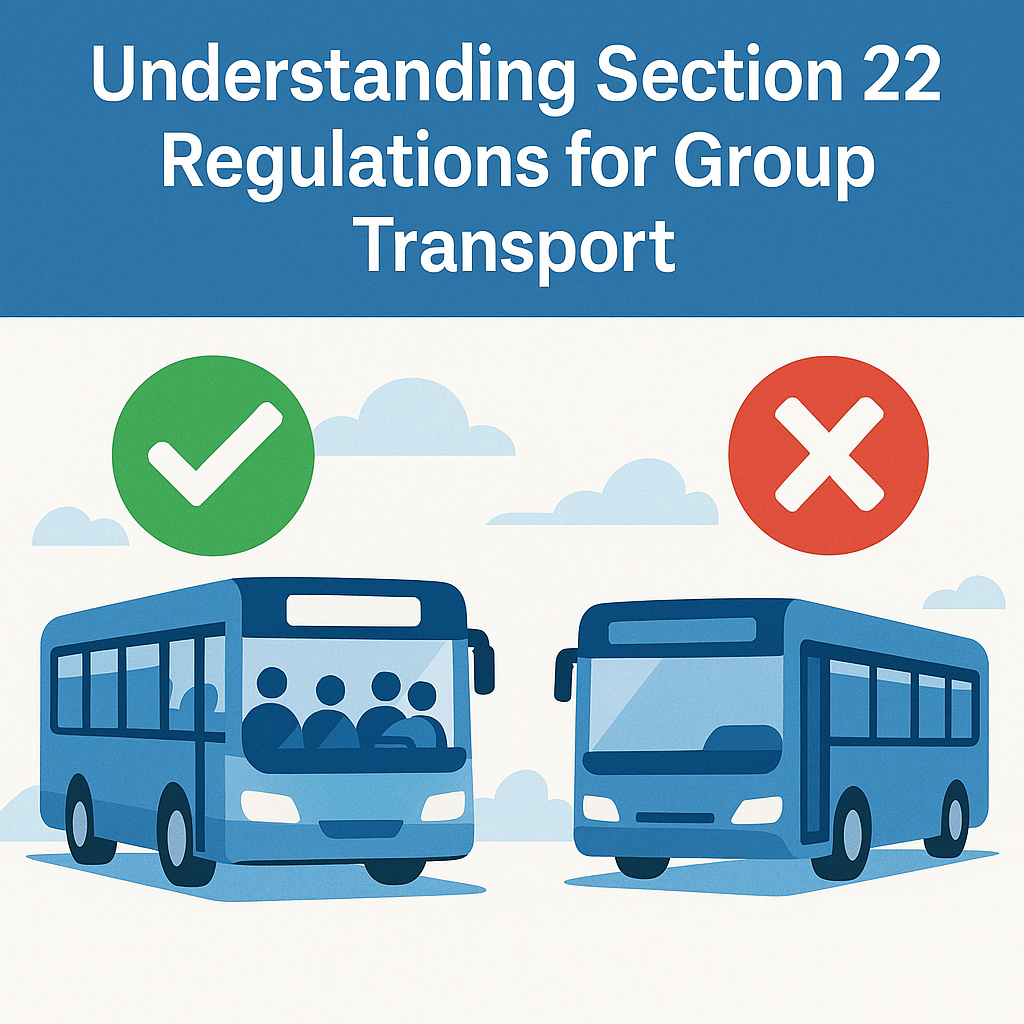
If you work in or around the transport industry, particularly with buses and coaches, you may have come across the term “Section 22 permits.” These are part of the UK’s regulatory framework under the Transport Act 1985, and they specifically relate to community transport operations. But when does group transport fall under Section 22 regulations, and when does it not? Let’s break it down.
✅ What is a Section 22 Permit?
A Section 22 permit allows organisations to operate local bus services without holding a Public Service Vehicle (PSV) operator’s licence. This is designed to support community transport services that are not run for commercial profit.
These services are often vital in areas where commercial operators don’t provide regular transport, such as rural locations or for specific groups like the elderly or disabled.
✅ Who Can Operate Under Section 22?
Section 22 permits are available to:
- Community interest companies
- Charities
- Voluntary organisations
- Not-for-profit companies
These organisations must:
- Operate local bus services open to the general public
- Reinvest any income into the service (non-profit)
- Use drivers who are either volunteers or paid under specific employment rules
- Register their services with the Traffic Commissioner and DVSA
✅ Key Features of Section 22 Services
- Open to the Public: Unlike private hire services, Section 22 routes must be accessible to the general public
- Fixed Routes & Timetables: Services must follow registered routes and schedules
- Non-Commercial: Operations cannot be run for profit, although fees may be charged to cover costs
- Vehicle Standards: Vehicles used must meet roadworthiness and safety standards
✅ When Group Transport Does Fall Under Section 22
Group transport may fall under Section 22 regulations if:
- The service is open to the public (not just members of a specific organisation)
- It is operated by a non-profit or voluntary organisation
- The intent is to meet a community need rather than generate revenue
- The service is properly registered with the DVSA and Traffic Commissioner
Example: A charity running a scheduled minibus route through rural villages to a town centre each day, accessible to anyone, could qualify under Section 22.
❌ When Group Transport Does Not Fall Under Section 22
There are several scenarios where group transport operations would not be eligible for a Section 22 permit:
- Private Group Hire: If the transport is exclusively for a company, school, or club and not open to the general public
- Commercial Operations: Services run for profit, even if they serve community needs
- Tourism and Day Trips: These typically fall under private hire or PSV requirements
- Employee Shuttles: Services offered exclusively to company staff do not qualify
In these cases, a full PSV operator’s licence would be required.
📝 Quick Reference: What’s In Scope and What’s Not
|
Type of Transport |
Falls Under Section 22? |
|
Local public bus service (non-profit) |
✅ Yes |
|
Volunteer-led community shuttle |
✅ Yes |
|
Private hire for a school or business |
❌ No |
|
Commercially run coach service |
❌ No |
|
Tourist or day trip coach services |
❌ No |
|
Company employee shuttle service |
❌ No |
Why It Matters
Understanding whether a transport service qualifies under Section 22 is crucial for compliance. Operating without the correct permissions can lead to fines, enforcement action, or the suspension of services. It also ensures that your organisation is aligned with the broader goal of supporting accessible, sustainable, and safe transport services.
Final Thoughts
Section 22 regulations are an excellent tool for supporting community-based transport solutions, but they come with specific requirements that must be carefully met. If you’re unsure whether a service qualifies, it’s always worth seeking advice or reviewing guidance from the Traffic Commissioner or DVSA.
Got questions or need support with community or group transport compliance? Feel free to get in touch — we’re here to help

